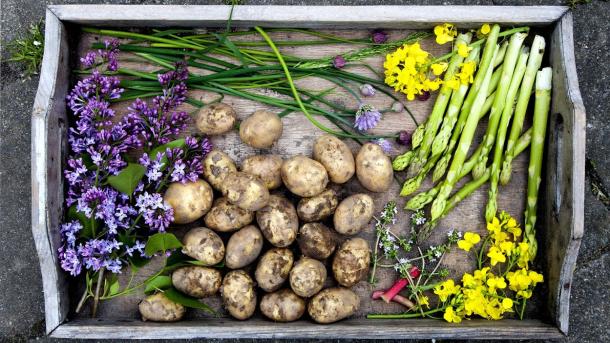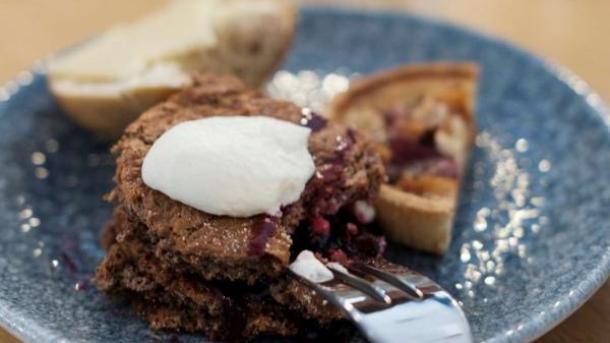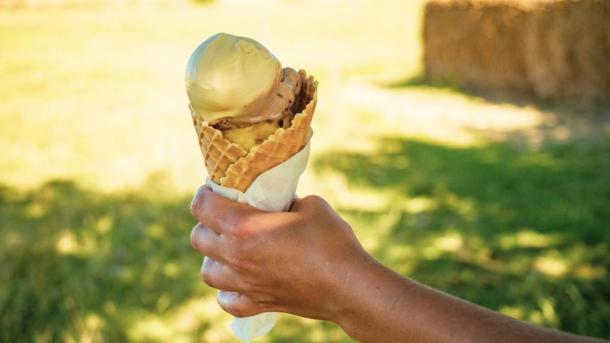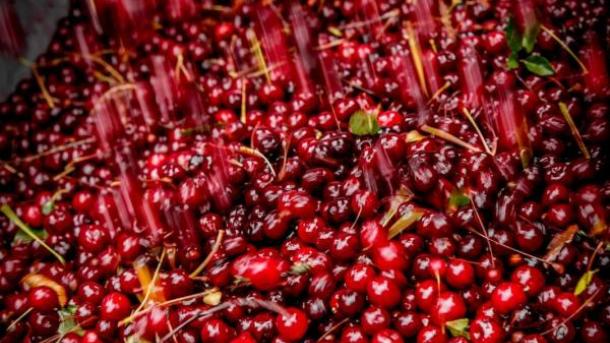.jpg?h=ae30cebe&itok=y1e--Qyv)
10 delicious reasons to visit Denmark's islands
From Læsø in the north to Lolland in the south, every one of Denmark's many islands has its own characteristics, local culture and traditions. Especially when it comes to food and drinks, there is no reason to leave the Danish islands on an empty stomach.
Salt on Læsø
Start off with a visit to Læsø for a taste of the island’s world-class sea salt. The Læsø salt works started in their current form in 1991, but the island’s history with salt production dates all the way back to medieval times. The salt is made with an ancient seething method using local wood and the finished product contains minerals that give the salt its unique flavour. At the works, you can make your own salt using the traditional method.
Beer on Fur
Microbreweries are popular in Denmark, and many towns and island have their own selection of beers. The beer lovers on the North Jutland island of Fur were among the first movers opening their brewery in 2004. Located in a former factory, the brewery also has its own restaurant where you can taste a wide selection of its beers.
Gin on Anholt
For another boozy stop, head to the island of Anholt. In order to make good gin, you need good juniper berries. And that is exactly what they have on Anholt with more than 10,000 juniper bushes growing around the island. Since the production started, the locals have been helping out harvesting the juniper berries which are then transformed into the clean, well-rounded gin. If you visit during the summer, make sure to stop by the rustic gin bar Dørken.
Potatoes on Samsø
The island of Samsø is known to grow some of the absolute best potatoes in Denmark. The first Samsø potatoes arrive mid-May every year, and they are usually sold for high bids to top restaurants. During the potato season, you can stop by the 50-60 roadside stalls and farm shops where the tasty potatoes are sold often along with strawberries and peas. The new potatoes are boiled and served with butter and salt.
Smoked herrings on Bornholm
The rocky island of Bornholm has many specialities to choose from, including smoked herrings. There used to be so many smokehouses in the town of Gudhjem that it was referred to as “the 100 chimney town”, but today only 10 smokehouses remain. Smoked herring is often served with a raw egg yolk, radishes, spring onions and rye bread in a dish poetically called “Sun over Gudhjem”.
Cakes on Als
The region of South Jutland is famous for their groaning tables of cakes, and the island of Als is an ideal place to try the “Southern Jutland Coffee Tables” as the feasts are called. The tradition dates back to the years where Denmark was occupied by Germany and the people of South Jutland used the feasts as an opportunity to get together. As a minimum, a coffee table requires seven soft cakes and seven biscuits or hard cakes.
Apples on Fejø
The Vesterled plantation on the island of Fejø is known for its amazing fruit. Fejø is located in the southern part of Denmark and the island gets around 200 hours of sun more than the Danish average so maybe that is why their fruits taste so good! All the fruit at Vesterled is produced organically and with a minimal use of chemicals. The Fejø apples are particularly well-known and you can also have a taste of them in the form of juice and cider in local shops and cafés.
Oysters on Rømø
Every year in October, the people on the island of Rømø head to the beaches to gather oysters from the oyster beds in the UNESCO-listed Wadden Sea. The delicacy even has its own festival. In 2019, the guests ate a total of 7,000 oysters. As the tasty oysters are classified as an invasive species threatening other species of shellfish in the area, all that guzzling is considered a good thing. If you wish to sample the other Danish oyster variety – the Limfjord’s oyster – head further up the coast to North Jutland.
Ice cream on Ærø
No summer is complete without ice cream and at Aroma Is on the island Ærø, there are plenty of flavours to choose from. Everything is made by hand using local ingredients such as fresh strawberries from the local farms. Aside from the more traditional ice creams, you can also try innovative flavour combinations such as carrot and sea buckthorn as well as ice cream made with local goat’s milk.
Cherry wine on Lolland
In regal surroundings at the manor house Frederiksdal Estate, you will find Denmark’s largest winery, Frederiksdal Kirsebærvin, which specialises in cherry wine. It is located on one of Denmark’s southern islands, Lolland, where cherries have optimal growth conditions. The cherries are grown on the plantations surrounding the estate and the wine is aged outside in hundreds of wine carboys for at least a year and afterwards in cognac casks for another year.











